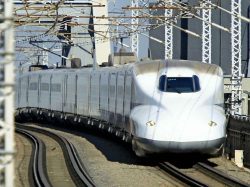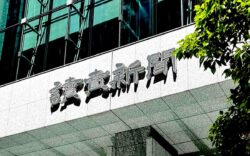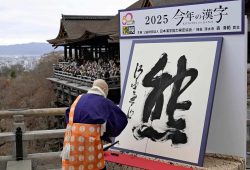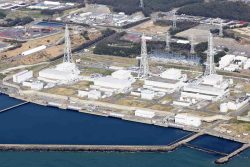JR East Eyes Freight-Only Cars for Shinkasen Trains as Japan Logistics Industry Suffers from Labor Shortage
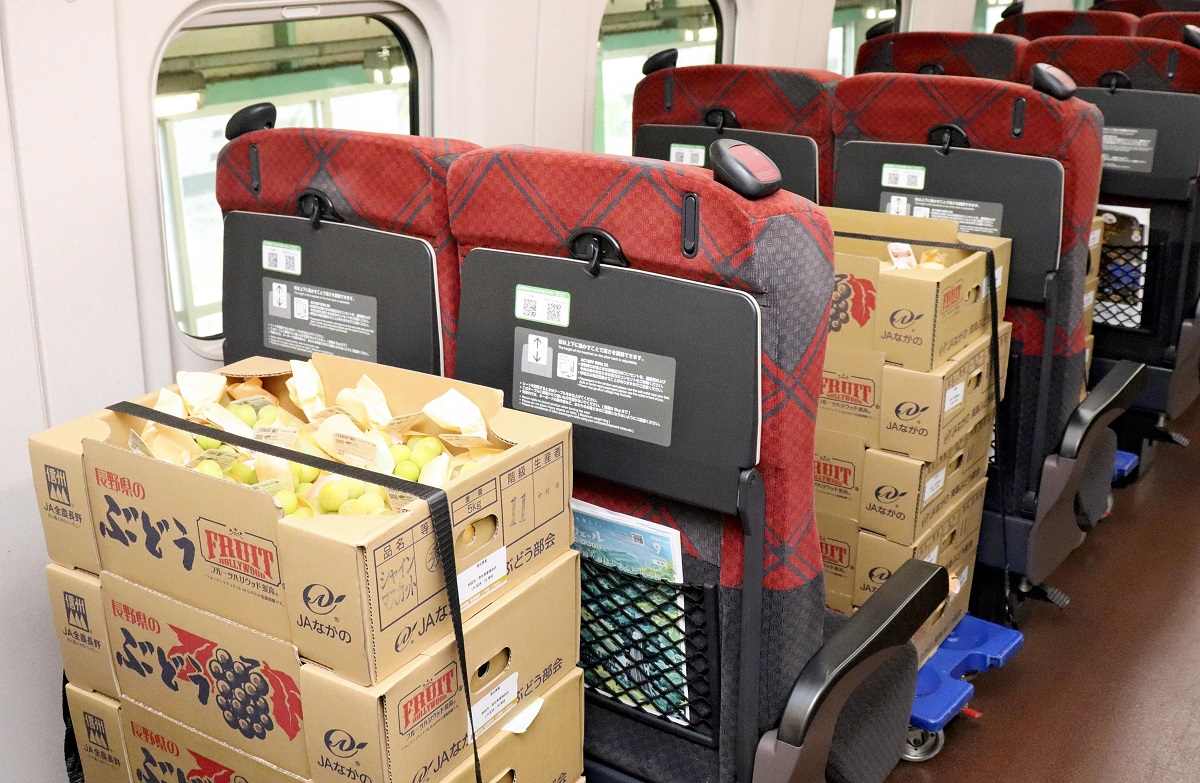
Shine Muscat grapes are placed in front of Shinkansen passenger seats in Nagano in September 2023.
6:00 JST, October 3, 2024
East Japan Railway Co. is considering the development of a dedicated Shinkansen car that will have no seats and carry only freight, The Yomiuri Shimbun has learned.
Although JR companies have been integrating passenger and freight transport, carrying freight in part of a train car or on empty seats, this would be the first time for Shinkansen trains to have cargo-only cars.
JR East is considering removing all the seats from dedicated freight cars to allow them to carry more and larger pieces of cargo. The system might involve only the first car of a train, so that passengers do not pass through it. Other ideas include enlarging the doors of a freight car to make loading and unloading more efficient, or having entire trains dedicated to cargo.
JR companies began using Shinkansen trains to transport freight as part of their initiatives to combine passenger and cargo transport during the COVID-19 pandemic, when the number of passengers plummeted.
JR East has been operating the service on a full scale since 2021 on the Tohoku Shinkansen and other lines, transporting goods such as fresh fish and souvenirs. It intends to commercialize the high-speed, high-volume transportation of freight in fiscal 2025, and is now conducting trials.
However, since the number of passenger seats would decrease with the introduction of freight-only cars, the company is still considering whether to introduce such a service and on what scale, while keeping an eye on the demand for both passengers and freight.
A shortage of labor is increasingly being felt in the logistics industry, due to stricter regulations on truck drivers’ working hours from April of this year. Hopes are rising for Shinkansen-based transport.
"Business" POPULAR ARTICLE
-
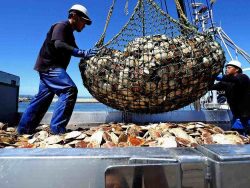
Japan’s Hopes for Seafood Exports Shot Down in China Spat
-

Keidanren Chairman Yoshinobu Tsutsui Visits Kashiwazaki-Kariwa Nuclear Power Plant; Inspects New Emergency Safety System
-

Japan Exports Rise in October as Slump in U.S. Sales Eases
-

Govt Aims to Expand NISA Program Lineup, Abolish Age Restriction
-

Blanket Eel Trade Restrictions Rejected
JN ACCESS RANKING
-

Japan’s Hopes for Seafood Exports Shot Down in China Spat
-

Keidanren Chairman Yoshinobu Tsutsui Visits Kashiwazaki-Kariwa Nuclear Power Plant; Inspects New Emergency Safety System
-

Japan to Charge Foreigners More for Residence Permits, Looking to Align with Western Countries
-

Japan Exports Rise in October as Slump in U.S. Sales Eases
-

Govt Aims to Expand NISA Program Lineup, Abolish Age Restriction


